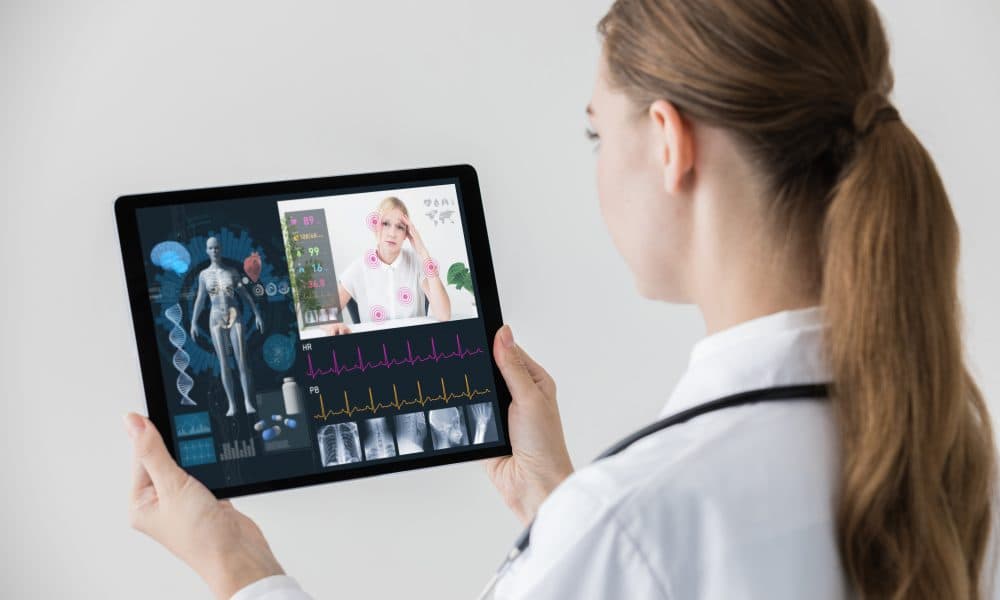High costs & rise in chronic diseases drive remote patient monitoring, report finds

Rising healthcare costs, an ageing population and an increasing prevalence of chronic diseases are driving the uptake of remote patient monitoring (RPM) technologies, a report has found.
Constructed by IDTechEx, the recent report, forecasts the market for medical devices supporting RPM to reach US$45 billion by 2033 – one of the many findings being around diabetes care.
As it’s one of the health conditions most commonly covered by RPM programs worldwide, Diabetes is a very expensive health condition to treat. The World Health Organisation estimates the cost at US$760 billion annually (£637 billion), with 90% of this attributed to managing complications.
Managing the condition well can prevent complications but requires diligent monitoring of blood glucose by the patient and the support of several medical devices.
RPM programs “leading players”
Today, RPM programs by leading players such as Onduo, Omada and Livongo (Teladoc) provide connected glucometers, unlimited supplies of glucose test strips, and through digital health, personalised insights and expert coaching.
Peer-reviewed studies published by RPM companies have generally revealed that they are able to reduce diabetes-related medical spending, ER visits, hospital admissions, and improve patient metrics and outcomes.
Though RPM programs mostly offer test strips, the market in self-monitoring has shifted significantly towards continuous glucose monitors (CGM). These minimally invasive and wearable sensors command a US$7 billion market today, serving mostly the type 1 diabetes population.
However, leading companies such as Abbott and Dexcom are eyeing up the much larger type 2 diabetes population who can also benefit from glucose monitoring.
Indeed, the rise of patients with type 2 diabetes is a significant problem looming over healthcare systems worldwide.
The US Centres for Disease Control and Prevention estimates that 1 in 3 adults are on their way to developing type 2 diabetes within their lifetime.
Unlike programs for diabetes which are supported by medical devices such as test strips and continuous glucose monitors, RPM programs for diabetes prevention only utilise smart scales for weight logging. As such, several non-invasive glucose monitoring companies are eyeing up the pre-diabetes market for disruption.
Hypertension: The “silent killer”
The most common health condition covered by RPM programs is hypertension, also known as high blood pressure. It is estimated that over 1 billion people worldwide suffer from hypertension, increasing the risk of heart attacks and strokes. Management of hypertension can prevent up to 80% of heart attacks and strokes.
Hypertension is well suited for RPM – blood pressure cuffs are easy to use, and monitoring at home provides a more accurate picture of blood pressure.
Leading RPM providers support hypertension management with connected blood pressure cuffs, as do several medical device manufacturers.
Omron, the market leader in blood pressure monitoring, launched VitalSight, an RPM program, in 2021. In the UK, the company has launched Hypertension Plus, a program for clinicians under the UK’s National Health Service.
While monitoring blood pressure may not be as uncomfortable as pricking skin to draw blood, the devices are much larger than glucometers and often unwieldy to carry around.
Additionally, the readings take time – a patient must be rested to take an accurate measurement, and the blood pressure cuff has to inflate and deflate for the reading itself.
Due to the prevalence of the condition and the lack of obvious symptoms, the development of a non-invasive monitoring technology that can be paired with popular consumer devices such as smartphones and smartwatches, poses significant market opportunity and potential benefit to patients and healthcare systems.
HeartGuide
Previously, Omron developed the HeartGuide, a smartwatch-based blood pressure cuff, but companies today are looking towards cuff-less technologies using AI algorithms and optical techniques.
A benefit of cuffless technologies on smartwatches is the potential for seamless background monitoring and the potential to provide early warnings to those with the condition.
Development of the technology toward FDA clearance is ongoing, though several devices requiring calibration are already cleared for use elsewhere in the world.
Don’t miss…






